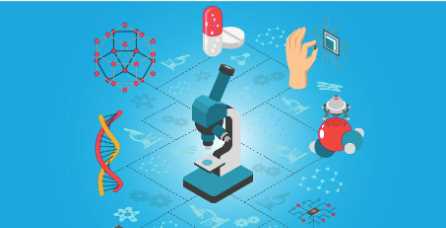The uses of nanotechnology
Applications of nanotechnology are delivering on the promise of nanotechnology to benefit humanity in both expected and unforeseen ways after more than 20 years of basic nanoscience research and more than 15 years of dedicated R&D under the NNI.
Information technology, homeland security, healthcare, energy, transportation, food safety, and environmental research are just a few of the domains in which nanotechnology is significantly advancing, if not revolutionizing, technology and industry. The list of advantages and uses for nanotechnology, which is quickly developing, is briefly described below.
Materials and Methods Used Frequently
The fact that it is feasible to modify a material's structure at incredibly small scales to attain particular qualities depends on nanotechnology in many ways, considerably expanding the toolkit of materials science. Materials can be efficiently improved in various ways, including strength, weight, durability, reactivity, sieve-likeness, and electrical conductivity. There are numerous common commercial goods now available and in use that involve nanoscale components and methods:
Fabrics can be treated with nanoscale chemicals or surface treatments to help them resist wrinkling, staining, and bacterial development, or to provide lightweight ballistic energy deflection in personal body armor.
Glasses, computer and camera displays, windows, and other surfaces can be made water- and residue-resistant, anti reflective, self-cleaning, immune to UV or infrared radiation, anti fog, antimicrobial, scratch-resistant, or electrically conductive by applying clear nanoscale films to them.
Washable, long-lasting 'smart fabrics' with flexible nanoscale sensors and electronics are starting to be made possible by nanoscale materials. These fabrics can monitor health, catch solar energy, and harvest energy through movement.
Significant fuel savings could result from making vehicles lighter, including cars, trucks, planes, boats, and spacecraft. Baseball bats, tennis rackets, bicycles, motorcycle helmets, vehicle parts, luggage, and power tool housings are just a few examples of items made of polymer composite materials that have nanoscale additions to make them lighter, stiffer, more resilient, and more durable.
Applications in electronics and IT
The development of quicker, more portable, smaller, and systems that can manage and store ever-increasing volumes of data thanks in large part to the application of nanotechnology in computers and electronics. These applications, which are constantly changing, include:
Through nanotechnology, transistors, the fundamental switches that enable all modern computers, have shrunk ever-increasingly. A typical transistor at the turn of the century measured between 130 and 250 nanometers in size. The first transistor with a size of seven nanometers was developed by IBM in 2015, while the first one with a size of one nanometer was exhibited by Lawrence Berkeley National Laboratory in 2016! Your computer's whole memory could eventually fit on a single, tiny chip thanks to smaller, quicker, and better transistors.
Applications in Medicine and Healthcare
The tools, information, and cures now available to physicians in the field of medicine are already being expanded by nanotechnology. In order to create precise solutions for illness prevention, diagnosis, and therapy, nanomedicine, an application of nanotechnology in medicine, draws on the inherent scale of biological events. The following are a few instances of recent developments in this field:
A bamboo-like structure made of nitrogen-doped carbon nanotubes for the treatment of cancer is depicted in this micrograph in four different color variations.
In addition to being used in commercial applications as probes for the detection of certain nucleic acid sequences, gold nanoparticles are now being studied in clinical settings as potential therapies for cancer and other disorders.
Applications for Energy
In order to help satisfy the world's rising energy demands, nanotechnology is finding use in conventional energy sources and significantly improving alternative energy strategies. Many researchers are working to create accessible, economical, and renewable energy sources, as well as solutions to lower energy use and alleviate environmental impacts from toxicity:
Through improved catalysis, nanotechnology is increasing the efficiency of producing fuel from unprocessed petroleum sources. Through improved combustion and lower friction, it is also making it possible for fuel consumption in cars and power plants to be reduced.
Nanotechnology is also being used to enhance oil and gas extraction processes, such as the use of gas lift valves in offshore operations or the use of nanoparticles to identify minute cracks in down-well oil pipelines.




Leave Comment